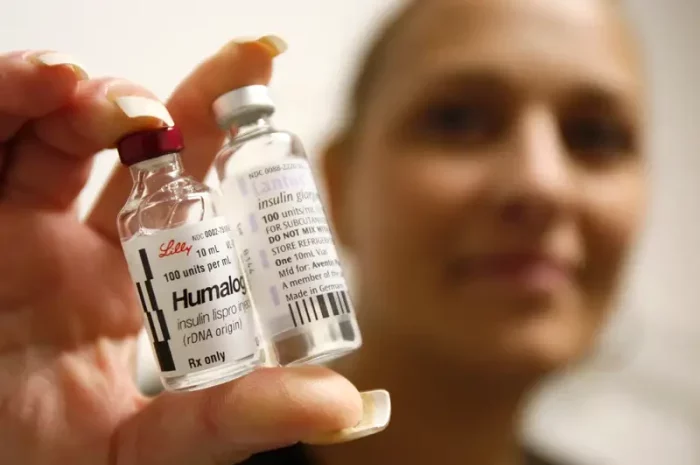Gestational diabetes mellitus (GDM) is a condition characterized by glucose intolerance with onset or first recognition during pregnancy. It poses significant risks for both the mother and the fetus, including increased likelihood of cesarean delivery, preeclampsia, and macrosomia, among others. Identifying and understanding the risk factors associated with GDM is crucial for early intervention and management, ultimately improving pregnancy outcomes. This article delves into the myriad factors that elevate the risk of developing gestational diabetes.
Genetic Predisposition and Family History
Genetic factors play a crucial role in the predisposition to gestational diabetes. Women with a family history of diabetes, particularly first-degree relatives such as parents or siblings with type 2 diabetes, have a heightened risk. This genetic susceptibility suggests that hereditary factors contribute to insulin resistance or beta-cell dysfunction, both of which are pivotal in the pathogenesis of GDM. Genetic predisposition can be evaluated through patient history and, increasingly, through genetic screening, although routine genetic testing for GDM risk is not yet standard practice.
Ethnicity and Race
Ethnicity and race are significant risk factors for gestational diabetes. Studies have consistently shown that women of certain ethnic backgrounds, including Hispanic, African American, Native American, South Asian, and Pacific Islander descent, are at a higher risk of developing GDM compared to their Caucasian counterparts. This increased risk is likely due to a combination of genetic factors, cultural dietary habits, and varying access to healthcare services. For example, traditional diets high in refined carbohydrates and sedentary lifestyles prevalent in some communities can exacerbate insulin resistance.
Age
Maternal age is a well-documented risk factor for gestational diabetes. Women over the age of 25 are generally at a higher risk, with the likelihood of developing GDM increasing progressively with age. This correlation is due to the natural decline in insulin sensitivity and pancreatic beta-cell function as women age. Advanced maternal age is associated with other complications as well, making age a critical consideration in prenatal care.
Pre-pregnancy Weight and Obesity
One of the most significant modifiable risk factors for gestational diabetes is pre-pregnancy weight. Overweight and obese women (with a body mass index (BMI) of 25 or greater) are at a substantially higher risk of developing GDM. Obesity exacerbates insulin resistance, a central mechanism in the development of gestational diabetes. Additionally, excessive adipose tissue leads to increased production of inflammatory cytokines, which further impair insulin signaling. Weight management through diet and exercise before pregnancy is crucial in reducing this risk.
Weight Gain During Pregnancy
Excessive weight gain during pregnancy, irrespective of pre-pregnancy BMI, is another significant risk factor. The Institute of Medicine provides guidelines on optimal weight gain during pregnancy based on pre-pregnancy BMI. Exceeding these recommendations can increase the likelihood of developing gestational diabetes. Excessive gestational weight gain contributes to insulin resistance and hyperglycemia, reinforcing the importance of monitoring weight gain through regular prenatal check-ups and dietary counseling.
Polycystic Ovary Syndrome (PCOS)
Women with polycystic ovary syndrome (PCOS) are at an elevated risk for gestational diabetes. PCOS is a condition characterized by insulin resistance, hyperandrogenism, and ovulatory dysfunction, all of which contribute to the increased risk of GDM. The presence of PCOS often necessitates closer monitoring for gestational diabetes, starting from the early stages of pregnancy or even pre-conception.
Prior History of Gestational Diabetes or Macrosomia
A previous diagnosis of gestational diabetes significantly increases the risk of recurrence in subsequent pregnancies. This history is a strong predictor and necessitates early and frequent glucose monitoring in subsequent pregnancies. Additionally, a history of giving birth to a macrosomic infant (birth weight over 4,000 grams or 8 pounds, 13 ounces) is also indicative of higher GDM risk. Macrosomia itself can be a consequence of undiagnosed or poorly managed gestational diabetes, highlighting the interconnectedness of these risk factors.
Sedentary Lifestyle and Physical Inactivity
Physical inactivity is a modifiable risk factor for gestational diabetes. A sedentary lifestyle contributes to obesity and insulin resistance, both of which are critical in the development of GDM. Engaging in regular physical activity can improve insulin sensitivity, assist in weight management, and reduce the risk of developing gestational diabetes. Pregnant women are generally encouraged to participate in moderate-intensity exercise, such as walking or swimming, unless contraindicated.
Dietary Habits
Diet plays a pivotal role in the risk of gestational diabetes. Diets high in refined sugars, processed foods, and unhealthy fats can contribute to excessive weight gain and insulin resistance. Conversely, diets rich in fiber, whole grains, lean proteins, and healthy fats can help in maintaining optimal blood glucose levels and preventing excessive weight gain. Nutritional counseling is a vital component of prenatal care, aimed at promoting healthy eating habits that can mitigate the risk of GDM.
Smoking and Substance Abuse
Smoking during pregnancy is associated with an increased risk of gestational diabetes. Nicotine and other harmful substances in cigarettes contribute to insulin resistance and can impair glucose metabolism. Additionally, substance abuse, including alcohol and illicit drugs, can adversely affect metabolic health and increase the risk of GDM. Smoking cessation and substance abuse counseling should be integral parts of prenatal care for at-risk women.
Hypertension and Preeclampsia
Hypertension, including chronic hypertension and pregnancy-induced hypertension, is associated with an increased risk of gestational diabetes. Both conditions share common pathophysiological mechanisms, such as endothelial dysfunction and inflammation, which contribute to insulin resistance. Preeclampsia, a severe complication characterized by high blood pressure and proteinuria, is also linked with higher GDM risk. Women with hypertension or preeclampsia require careful monitoring for gestational diabetes throughout their pregnancy.
Multiple Pregnancies
Carrying multiples, such as twins or triplets, increases the risk of gestational diabetes. Multiple pregnancies are associated with higher levels of placental hormones, which can exacerbate insulin resistance. Additionally, women carrying multiples are more likely to experience excessive weight gain and other metabolic disturbances that contribute to GDM risk. Specialized care and monitoring are essential for women with multiple pregnancies to manage this increased risk.
Stress and Mental Health
Psychological stress and poor mental health are emerging risk factors for gestational diabetes. Chronic stress can lead to elevated cortisol levels, which can impair insulin sensitivity and contribute to hyperglycemia. Additionally, conditions such as depression and anxiety are associated with poorer lifestyle choices, such as unhealthy eating habits and physical inactivity, further increasing the risk of GDM. Addressing mental health through counseling and stress management techniques is crucial for comprehensive prenatal care.
Socioeconomic Status and Access to Healthcare
Socioeconomic status significantly influences the risk of gestational diabetes. Women from lower socioeconomic backgrounds often face barriers to accessing healthcare, nutritious food, and safe environments for physical activity. These factors can contribute to higher rates of obesity, poor dietary habits, and inadequate prenatal care, all of which increase the risk of GDM. Improving access to healthcare and providing community support programs are essential strategies in reducing the incidence of gestational diabetes in underserved populations.
Previous Unexplained Stillbirth or Neonatal Death
A history of unexplained stillbirth or neonatal death is a risk factor for gestational diabetes in subsequent pregnancies. This history suggests possible undiagnosed metabolic or vascular issues, which could include unrecognized GDM. Women with such a history should be closely monitored for gestational diabetes and other potential complications in future pregnancies.
See also:A Crucial Tool for Diagnosing Gestational Diabetes Introduction
Conclusion
Gestational diabetes is a complex condition influenced by a myriad of genetic, physiological, and lifestyle factors. Understanding these risk factors is essential for healthcare providers to identify at-risk individuals early and implement preventive and management strategies. Preconception counseling, lifestyle modifications, and regular prenatal care are critical in mitigating the risks associated with gestational diabetes. By addressing modifiable risk factors and providing targeted care for those with inherent risks, the incidence and adverse outcomes of gestational diabetes can be significantly reduced, ensuring healthier pregnancies and better long-term health for both mothers and their children.
Related topics:



























